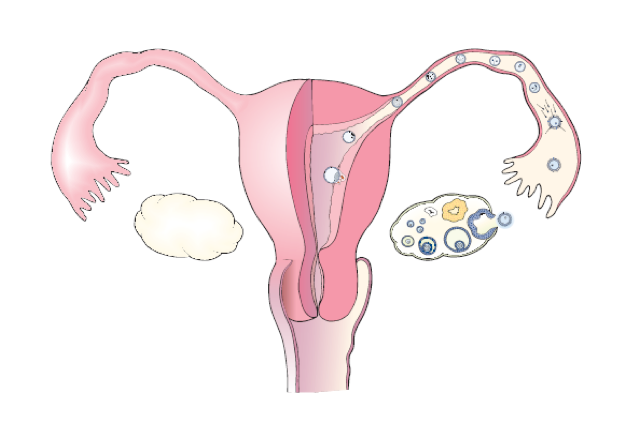Before we start the treatment for infertility, it is important that we identify the causes of your infertility.
The examination of the woman includes all relevant medical information such as medication, previous treatments and information of general health, examination of the uterus and ovaries and an analysis of the hormones.
We need information about the general health of the women, among other things we observe:
Various methods are used to examine the uterus. Normally, we use a transvaginal ultrasound scan and if we suspect closed Fallopian Tubes a water scan to get information about the function of the uterus and the uterine tubes. Below is listed the different methods for investigation needed.
Illustrated is a normally functioning uterus:

Illustration kindly provided by Organon
A water scan is often called HSU, this is an abbreviation of hysterosalpingoultrasonography. A water scan is the most frequently used method to examine the woman’s uterus and uterine tubes. It is simple and is less pain full than HSG.
A hysteroscopy is an examination with a hysteroscope through which the inner side of the woman’s uterus can be observed. The examination is performed in local anaesthesia.
Hysterosalpingography is often abbreviated to HSG. HSG is an X-ray examination where contrast fluids is introduced into the uterus, and the function of the uterine tubes are displayed on the X-ray. The examination is not very often used.
A laparoscopy is an examination with a scope in the abdominal cavity to exclude any problems in the internal genitals
An analysis of the hormones is at blood test, which shows the present concentration of the hormones.
The interplay of the hormones and the concentration is of considerable importance for the woman’s ability to mature eggs and to get an ovulation.